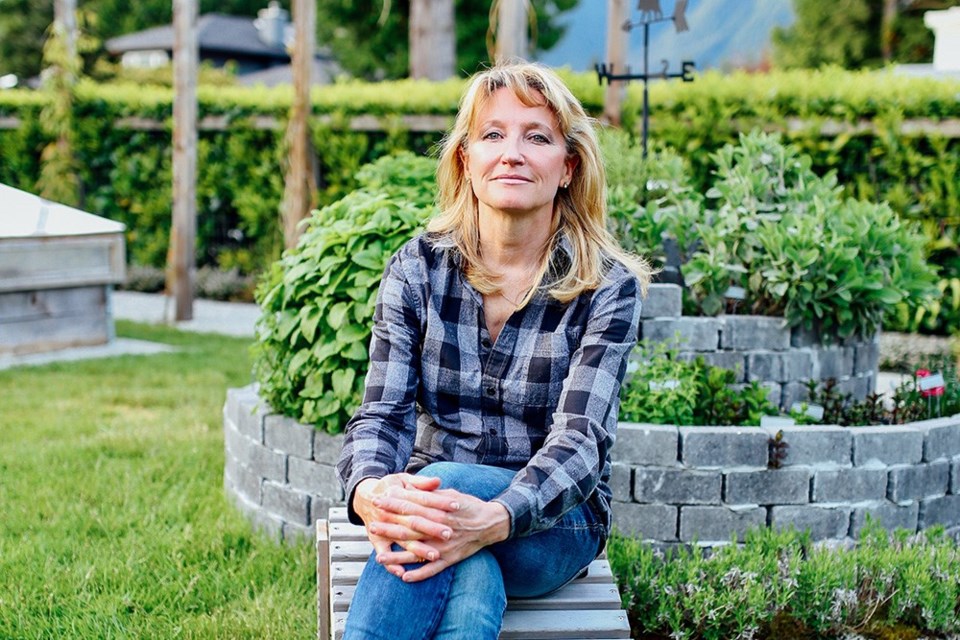Mention permaculture to most people, and one of two things happen. Their eyes glaze over entirely. Or they back away and make a squidgy face as if they could smell chicken manure piled high in a recycled plastic lard bucket, steaming away inside a greenhouse constructed of cracked and mismatched windows. Fair enough. That was me, just a few years ago, with the squidgy face.
Permaculture (a.k.a. permanent agriculture) is a concept that was formalized in 1978 by two Australian environmental academics, Bill Mollison and David Holmgren, in opposition to western industrialized methods and in congruence with indigenous and traditional knowledge.
The Wikipedia definition of permaculture is "an approach to land management and philosophy that adopts arrangements observed in flourishing natural ecosystems. It includes a set of design principles derived using whole systems thinking. It uses these principles in fields such as regenerative agriculture, re-wilding, and community resilience." I add to that last bit, "reuse and recycling." Eyes glazing over? I don’t blame you.
Mollison and Holmgren conceived three overarching ethics plus a dozen guiding principles to govern agricultural best practices, and prescribe an entirely self-sufficient way of living.
At the centre of all things permaculture is "design" — the strategic assignment of living, working, and natural resource zone bubbles placed in concentric circles based on long-term observation and assessment of geography, weather, hydrology, animal migration, security, history, natural assets, siting, and many, many other factors. Function over form, utility over beauty, production over pretty. At its most basic, permaculture is bio-mimicry in all things — a deference to nature’s logic.
Fascinating stuff based on sound science and inherited knowledge, and entirely applicable to homesteaders starting from scratch on acreage, to small-hold farmers, and to anyone living in a rural setting. Dive deep into permaculture and you have a prescription for healing the planet, and for creating food security.
If humanity had a giant do-over, we could lean heavily on permaculture ethics and ethos, to get it right, and to do so equitably and ethically. With 84 per cent of North Americans (56% global population) living in urban areas, a do-over isn’t in the cards, but a makeover? Most definitely.
We can indeed make a big, beautiful green dent in the universe, if all of us living in and on the edges of cities and suburbs, in houses, apartments, condos, co-ops, RVs, and mini houses undertake a tiny urban permaculture makeover. We can each embrace a traditional permaculture principle or two, bending and squeezing them to fit community constructs, bylaws, design guidelines, infrastructure, neighbourhood culture and traditions, and the rights and expectations of friends and neighbours. We can and we should.
And yes, we can do so beautifully. Urban permaculture can be charming, productive, sustainable, delicious, and beautiful. It must be, or we will not gain widespread adoption or approval at the community level, and we won’t make any dent at all.
The good news, the news that I am privileged to share with you every other week, is that urban permaculture is easy, and it is highly malleable. Kids in particular, love it. Creating food gardens, re-wilding with native plants, increasing natural habitat and biodiversity, improving soil biology, and conserving/harnessing natural resources are things we can all do to lesser or greater degree, and all of these things contribute directly and significantly to our food security and the food security of wildlife.
The permaculture brief was a one-time necessity to provide context to what comes next. Dig deeper, certainly, if it interests you. Otherwise, from here on in, expect fun and informative, righteously sustainable, easy to understand garden-to-table ideas and inspiration for seasoned, newbie and wannabe gardeners and cooks.
Laura Marie Neubert is a West Vancouver-based urban permaculture designer. Follow her on Instagram @upfrontandbeautiful, learn more about permaculture by visiting her Upfront & Beautiful website or email your questions to her here.
For a taste of permaculture, click on the YouTube link below:
(Video - Courtesy of West Vancouver Memorial Library)



